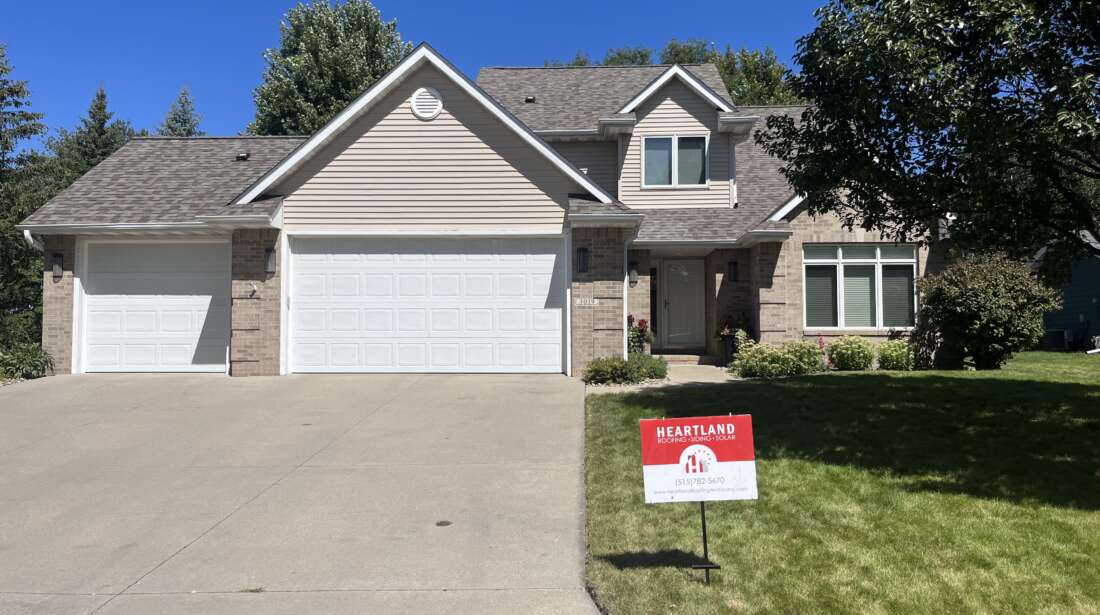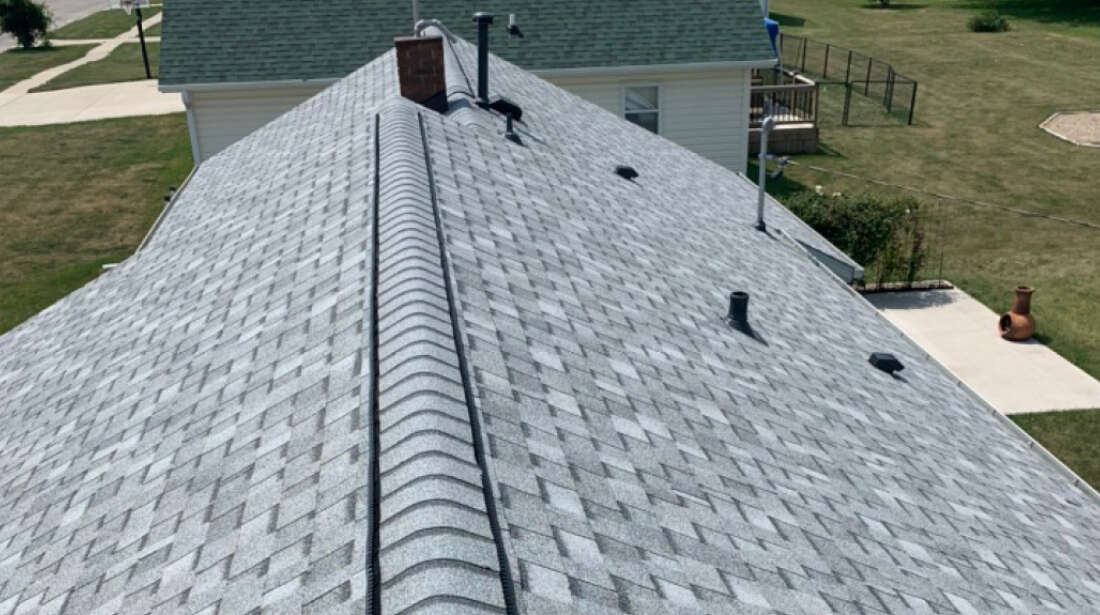
Your roof is one of the most critical components of your home, protecting you and your belongings from the elements. However, like any part of your home, it can encounter issues over time. Here are the eight most common roofing problems homeowners face and how to deal with them.
Common Roof Problem #1: Leaks and Moisture
One of the most common roofing problems homeowners encounter is leaks and moisture infiltration. Leaks can occur for various reasons, including damaged shingles, cracked flashing, or improperly sealed roof valleys. Everything from foot traffic to local wildlife can leave scrapes, puncture marks or even big holes in a roof. The damage can build up over the years, affecting the underlying wood or exposing it to rot-causing moisture.
Most commonly, roof leaks tend to occur:
- Near the chimney
- Under damaged shingles
- At flashing points
- Around gutters
- At skylights
- Close to vents and pipes
- In low spots or valleys
Signs of a roof leak include water stains on ceilings or walls, mold growth, and damp insulation in the attic.
Solution
Regular roof inspections can help identify potential leak sources before they become major problems. Promptly repair or replace damaged shingles and ensure the flashing is properly sealed. Installing a quality underlayment during roof installation can also provide an additional layer of protection against moisture. If you see any of the signs of a leak or moisture, contact Heartland Roofing, Siding, and Solar for an inspection from one of our residential roof repair specialists.
Common Roof Problem #2: Missing or Damaged Shingles
Shingles can become damaged or lift away from the roof due to severe weather conditions, such as high winds, hail, or heavy snow. Damaged shingles can lead to leaks, reduced insulation, and increased vulnerability to further damage.
Solution
Have your roof inspected at least twice per year, especially after severe weather events, and replace any missing or damaged shingles immediately. Using high-quality shingles, such as those from Owens Corning, can provide better durability and protection against the elements.

Common Roof Problem #3: Poor Installation
A poorly installed roof or gutter system can lead to numerous problems, including premature aging and structural issues. Common signs of poor installation include uneven shingle lines, improperly installed flashing and inadequate ventilation.
Solution
Always hire a reputable, experienced roofing contractor, like Heartland Roofing, Siding, and Solar, for roof installations and repairs. Choosing inexpensive roofing specialists, who are likely less experienced or not properly qualified, can cost you money in the long run. Poor roof installation remains one of the most common reasons for long-term complications, including mold. Our team is highly experienced and extremely knowledgeable. We do the job right the first time, so you do not face costly repairs down the road. No matter which contractor you choose, ensure they follow manufacturer guidelines and industry best practices for a proper installation.
Common Roof Problem #4: Improper Ventilation
Proper roof ventilation is essential for maintaining the longevity and performance of your roof. Without adequate ventilation, heat and moisture can build up in the attic, leading to problems such as mold growth, increased energy bills, and premature aging of roofing materials.
Solution
Ensure your roof has sufficient intake and exhaust vents to allow for proper airflow. Regularly inspect vents for blockages and make sure your attic insulation does not obstruct airflow.
Common Roof Problem #5: Tree Damage
Overhanging tree branches can pose a significant risk to your roof. Falling branches can cause physical damage to shingles, while leaves and debris can clog gutters and promote moisture buildup.
Solution
Trim tree branches that overhang your roof and remove any limbs resting on top of your home to prevent damage. Consider removing any trees from your yard that pose a danger to the long-term integrity of the roof. Regularly clean your gutters and remove debris from your roof to maintain proper drainage and prevent moisture issues.
Common Roof Problem #6: Snow and Ice Dams
Over the years, snow and ice can wreak havoc on almost any roof. Ice dams occur when snow on the roof melts and refreezes at the eaves, creating a barrier that prevents proper drainage. This can lead to water backing up under shingles. If it refreezes, the ice can push up against the flashing or shingles and even lift them, leaving gaps where more ice or water can get through.
Solution
Proper attic insulation and ventilation are key to preventing ice dams. Insulate your attic to maintain a consistent temperature and allow for adequate ventilation to prevent snow from melting unevenly. Installing ice and water shield membranes along the eaves can also provide extra protection against water infiltration. When you schedule a roof inspection with Heartland, our team assesses both the outside of the home and inside — including the attic — to determine the best course of action for you.
Common Roof Problem #7: Pooled Water
Flat or low-slope roofs are particularly susceptible to pooling water, which can lead to leaks, mold growth and structural damage. Pooled water can result from poor roof design, clogged drains or deteriorated roofing materials.
Solution
Ensure proper drainage by keeping roof drains and gutters clear of debris. On a flat roof, form tapered areas over the surface of the roof to create small slopes for water runoff. If pooling persists, consider re-sloping your roof or installing a new drainage system.
Common Roof Problem #8: Shrinkage and Blistering
Roofing materials, such as single-ply roofing membranes, can shrink or blister over time due to exposure to UV rays, temperature fluctuations and poor installation. Shrinkage can lead to cracks, tears, and roof leaks, while blistering can weaken the roofing material and reduce its effectiveness.
Your chances of seeing such damage depend on the type of roof you have installed. Built-up roofs are roofs are particularly susceptible to cracking and blistering because they are made of several layers covering a relatively flat surface.
Solution
Regularly inspect your roof for signs of shrinkage and blistering, especially if you have a single-ply membrane roof. Address any issues promptly by repairing or replacing affected areas. Using high-quality, UV-resistant roofing materials can help prevent shrinkage and blistering.
Maintaining a healthy roof is essential for protecting your home and ensuring its longevity. By being aware of these common roofing problems and taking proactive steps to address them, you can prevent costly repairs and extend the life of your roof. Repairing roofs can be tricky and dangerous for the average homeowner. In most cases, it is best not to fix the problem yourself.
At Heartland Roofing, Siding, and Solar, we are committed to helping homeowners keep their roofs in top condition. Whether you need a roof inspection, repair, or replacement, our experienced team is here to provide the highest quality service and expertise. Contact us today to schedule a consultation and ensure your roof remains in excellent shape for years to come.


